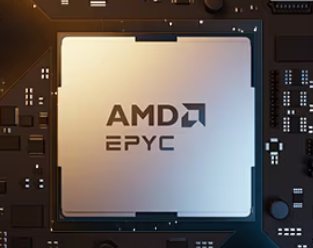Bergamo is the former codename for AMD’s new 4th gen EPYC 97X4 processors optimized for cloud-native workloads, which the company introduced earlier this month.
AMD is responding to the increasingly specialized nature of data center workloads by optimizing its server processors for specific workloads. This month AMD introduced two examples: Bergamo (97X4) for cloud and Genoa-X (9XX4X) for technical computing.
The AMD EPYC 97X4 processors are AMD’s first-ever designed specifically for cloud-native workloads. And they’re shipping now in volume to AMD’s hyperscale customers that include Facebook parent company Meta and partners including Supermicro.
Speaking of Supermicro, that company this week announced that the new AMD EPYC 97X4 processors can now be included in its entire line of Supermicro H13 AMD-based systems.
Zen mastery
The main difference between the AMD EPYC 97X4 and AMD’s general-purpose Genoa series processors comes down to the core chiplet. The 97X4 CPUs use a new design called “Zen 4c.” It’s an update on the AMD Zen 4 core used in the company’s Genoa processors.
Where AMD’s original Zen 4 was designed for the highest performance per core, the new Zen 4c has been designed for a sweet spot of both density and power efficiency.
As AMD CEO Lisa Su explained during the company’s recent Data Center and AI Technology Premier event, AMD achieved this by starting with the same RTL design as Zen 4. AMD engineers then optimized this physical layout for power and area. They also redesigned the L3 cache hierarchy for greater throughput.
The result: a design that takes up about 35% less area yet offers substantially better performance per watt.
Because the start from the Zen 4’s design, the new 97X4 processors are both software- and platform-compatible with Genoa. The idea is that end users can mix and match 97X4- and Genoa-based servers, depending on their specific workloads and computing needs.
Basic math
Another difference is that where Genoa processors offer up to 96 cores per socket, the new 97X4 processors offer up to 128.
Here’s how it’s done: Each AMD 97X4 system-on-chip (SoC) contains 8 core complex dies (CCDs). In turn, each CCD contains 16 Zen 4c cores. So 8 CCDs x 16 cores = a total of 128 cores.
As the table below shows, courtesy of AMD, there are three SKUs for the new EPYC 97X5 series processors:

For security, all 3 SKUs support AMD Infinity Guard, a suite of hardware-level security features, and AMD Infinity Architecture, which lets system builders and cloud architects get maximum power while still ensuring security.
Are your customers looking for servers to handle their cloud-native applications? Tell them to look into the new AMD EPYC 97X4 processors.
Do more:
- Watch AMD’s Data Center and AI Technology Premier video
- Learn more about Supermicro’s expanded H13 systems
- Check out the Bergamo tech specs:


